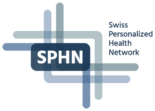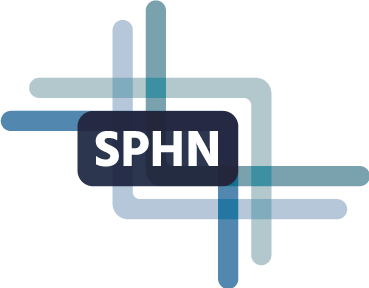02.06.2022
Today, SPHN releases the 2022.1 edition of the SPHN Semantic Interoperability Framework package including the SPHN Dataset (Pillar 1) and the SPHN RDF schema (Pillar 2). This important milestone was jointly achieved by the FAIR Data Team (formerly Data Interoperaibilty Team) of the SPHN Data Coordination Center, representatives from the University Hospitals and collaborators of the BioMedIT network.
To pull together data from different sources, the semantic meaning of the data must be interpretable by both humans and machines. The SPHN Semantic Interoperability Framework provides a common language, guidelines as well as tools required to combine health data for research in a FAIR manner. The SPHN Dataset describes the meaning of sharable data by using internationally recognized semantic standards. In order to have an exchange format representing the semantics, the SPHN RDF schema was developed. The schema is a template for data providers to provide data in a consistent manner. The template is flexible, permitting individual projects to modify the schema according to established rules for representing additional information of interest. This strategy serves two important goals: Supporting hospitals (and data providers in general) to efficiently deliver interoperable data while allowing for the flexibility needed by individual projects. Further services for data providers and data users are provided with the release, such as a set of SHACLs and statistical SPARQLs for quality control and a migration path to facilitate the update from the 2021.2 version of the RDF schema to the new version.
Main improvements and new items to the SPHN Semantic Framework
The following improvements have been brought to this 2022.1 version of the framework:
The SPHN Dataset now provides:
- general concepts serving as blueprints for more specific concepts, such as Diagnosis serving FOPH Diagnosis, Nursing Diagnosis and ICD-O Diagnosis (inheritance rules);
- new content enriching existing concepts, e.g. Lab analyzer and laterality;
- alignment of concepts and composedOfs naming to increase consistency and foster their reuse (ontological conceptualization).
The SPHN RDF schema has been updated to reflect the changes incorporated into the dataset as follows:
- reduction of the number of property identifiers by simplifying the rules when defining naming convention;
- a ‘Deprecated’ class has been created to group and indicate the list of classes/concepts that are no longer in use;
- OWL restrictions are used to encode value sets restrictions for a better representation of values indicated in chains of properties;
- additional notes and definitions are integrated for tackling special cases of information.
In addition the following tools and services are also provided:
- a template ontology provides a template for projects to design their RDF schema;
- a web-based visualization of the RDF schema provides resolvable URI and additional information about a class and its properties (cardinality, value restrictions, notes);
- a migration path provides a list of changes between the 2022.1 and 2021.2 version;
- a quality assurance framework with SHACLs and SPARQLs to facilitate the check for data compliance.
Outlook
A second release is planned in the course of 2022 integrating genomic concepts, among other things.
Availability
- The SPHN Dataset is openly available here: https://sphn.ch/document/sphn-dataset/
- The SPHN RDF schema is browsable here: https://www.biomedit.ch/rdf/sphn-ontology/sphn/2022/1
- The external terminologies in RDF are accessible on BioMedIT Portal: https://portal.dcc.sib.swiss/
- The Quality Assurance Framework is available here: https://git.dcc.sib.swiss/sphn-semantic-framework/sphn-ontology/-/tree/master/quality_assurance
- A comprehensive documentation is openly accessible here: https://sphn-semantic-framework.readthedocs.io/en/latest/

